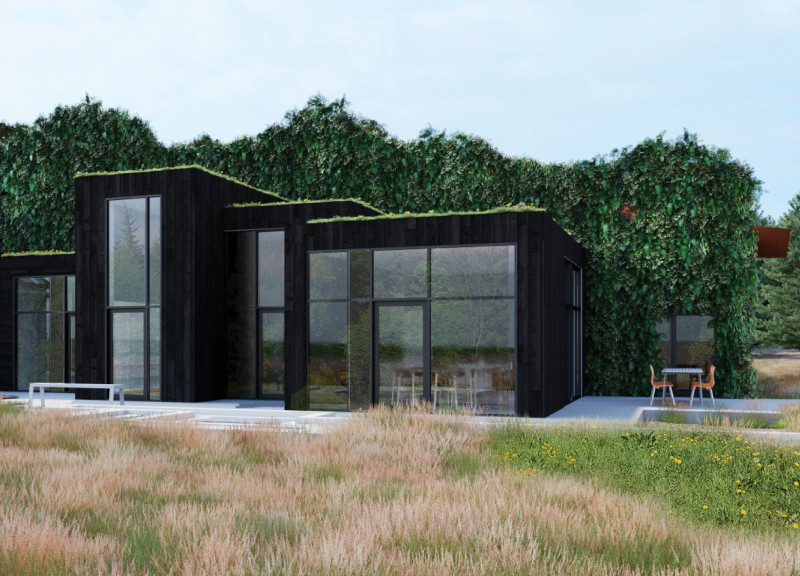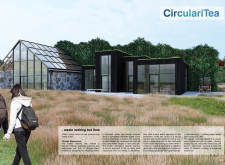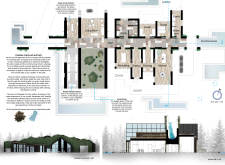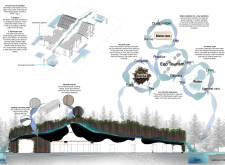5 key facts about this project
CirculariTea is located in Latvia and brings together the concepts of sustainability and tea production. The design aims to promote an understanding of environmental practices while creating a space where visitors can connect with nature and agriculture. Through the creative reuse of existing buildings, the project establishes a strong link to the local landscape and fosters an engaging experience for all who visit.
SUSTAINABLE REUSE
The project makes significant use of a barn, transforming it into a historical entry point that showcases the area's agricultural past. The original stone walls and roof remain intact, preserving the site's history and minimizing waste during construction. This choice highlights the commitment to sustainability and adds to the character of the space.
GREEN ELEMENTS
Green walls are integrated throughout the design, providing both beauty and function. These walls are home to aromatic herbs that serve a role in tea production and enhance the sensory experience for visitors. The presence of greenery inside and outside helps connect people to local farming practices and emphasizes the value of using native resources.
WATER MANAGEMENT
Effective water management is a key feature of the design. An innovative roofing system collects rainwater and directs it into basins for reuse. This practical solution addresses environmental needs while educating visitors about important water conservation techniques. By showcasing these methods, the project encourages deeper thought around ecological responsibility.
MULTIFUNCTIONAL SPACES
The layout supports a variety of activities, including fitness classes, yoga sessions, and community gatherings, all alongside areas for tea production. This flexibility allows for a dynamic use of space, enhancing visitor interaction and promoting a sense of community. It brings together different facets of the site, creating engaging experiences for everyone.
Overall, the careful blend of structural elements with natural surroundings leads to a setting that emphasizes sustainable practices. The glass facade allows natural light to pour inside, creating a bright environment that connects the interior with the beauty of the landscape outside.






















































